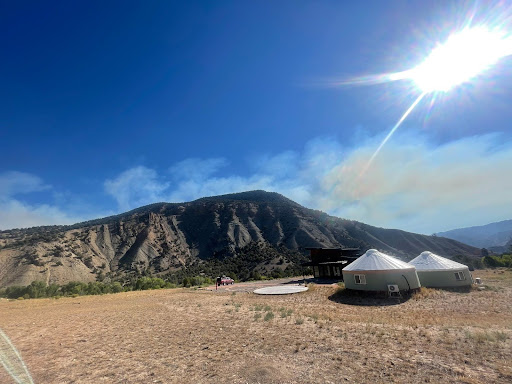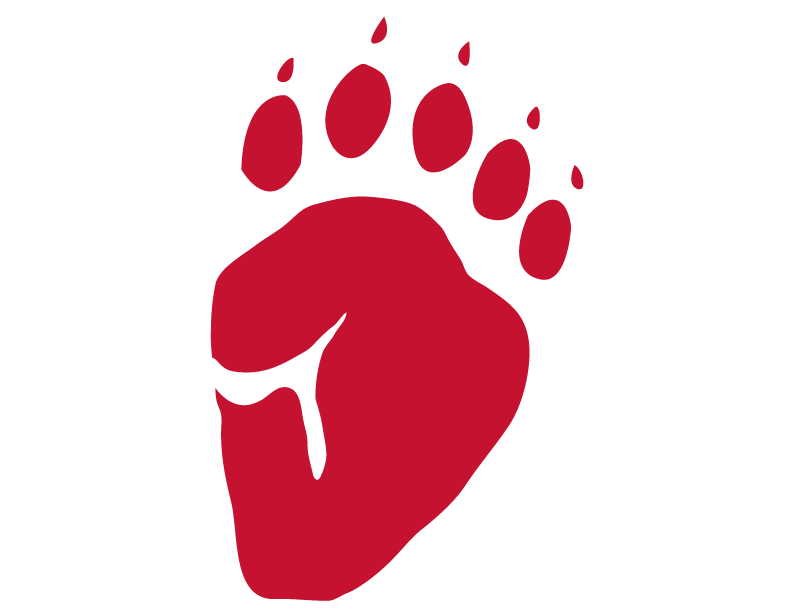Late in the evening on August 16th, lightning struck a cliff face near the Flat Tops Wilderness igniting what came to be known as the Derby Fire. Residents from surrounding communities such as Dotsero and Sweetwater were evacuated amidst the fire’s unpredictable path. As of September 26th, the Derby Fire had burned approximately 5,453 acres. The Derby Fire was more than just a disruption to the local residents, it also offered a chance for students to connect real-world ecological processes to what is happening locally.
For weeks, while the Derby Fire crawled unpredictably through the landscape, the Walking Mountains Sweetwater Campus remained silent, while staff and Sweetwater residents waited anxiously to return to their community. In early September, as crews began to contain the fire, our campus opened back up and was filled with seventh grade students eager to explore the high desert ecosystems. It was on those first days back that we realized we had an incredible opportunity to connect our biodiversity school program to the Derby Fire. Throughout the program, students have the chance to explore the ecosystems that surround the campus while focusing on calculating the biodiversity of those ecosystems. Large ant colonies, small sage brush lizards, prickly pear cactus in full-bloom, and red-tailed hawks captivate the students' attention.

The Derby Fire as seen from the Walking Mountains Sweetwater Campus on August 20, 2025. Photo taken by Paul Abling.
After spending the morning exploring the various ecosystems of Sweetwater, students spent the afternoon focusing on how biodiversity can be disrupted. A disruption is defined as any event or change that alters the natural state of an ecosystem or community. Disruptions can affect how organisms interact, survive, and thrive and can be positive or negative. Wildfires, such as the Derby Fire, offer a fascinating yet complicated example of how disruptions to an ecosystem’s biodiversity can be both destructive and beneficial.
Not too far from the Derby Fire, with smoke occasionally still being seen, students had the opportunity to engage in all that Sweetwater has to offer while playing a game that simulates the competitive nature of ecosystems where students act as plants and animals attempting to gather their basic needs. Just like a lightning strike, fire is introduced as a disturbance when students least expect it. In this simulation, students can safely experience how wildfires can destroy habitats killing trees, shrubs, and animals, forcing the ecosystem’s biodiversity to ultimately decrease.

7th grade students explore the biodiversity of Sweetwater using tablets to track plant population changes over time.
Only after a longer period of time, after a wildfire, do we begin to see the benefits of this disruption. This is known as fire succession, the ecological process that occurs after a fire resets an ecosystem, allowing for a new cycle of organisms to repopulate the area ultimately leading to higher biodiversity. The timeline for fire succession is often categorized into four stages. The pioneer stage occurs where pioneer species such as fireweed and lodgepole pine began to repopulate the area. Then an ecosystem passes through early and mid succession stages defined by repopulation of herbaceous plants, shrubs, and small trees before entering the late successional phase. This stage is where the ecosystem has reached a stable and diverse state.
While wildfires are often seen as destructive in modern society, they can also be a form of ecological renewal and significantly contribute to biodiversity. The Derby Fire reminds us of the dynamic nature of mountain ecosystems and of how disturbance (in this case fire) is a vital part of promoting biodiversity. For the Walking Mountains program and our students, such disturbances are also an opportunity to deepen scientific understanding, to observe nature up close, and to encourage them to become active stewards of the landscapes we inhabit. In doing so we not only learn about biodiversity and how it can change, we can experience it.
Written by Rylee Bundy. Rylee Bundy is a Walking Mountains educator and Foley Graduate fellow in her second year of the graduate program. Rylee was born and raised in Colorado, and when she’s not teaching, she loves to fly fish, explore Eagle Valley, play soccer, listen to live music, and sit by the river.







